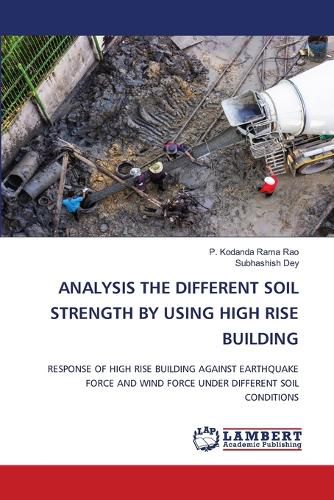Analysis the Different Soil Strength by Using High Rise Building
P Kodanda Rama Rao, Subhashish Dey

Analysis the Different Soil Strength by Using High Rise Building
P Kodanda Rama Rao, Subhashish Dey
Wind and earthquake loadings are the two most common forms of lateral dynamic excitations experienced by high-rise buildings. An effective design must assure the safety of a building's structural and non-structural components against both types of loads.Reinforced concrete building structures are made up of horizontal elements (beams and slabs) and vertical members (columns and walls) that are held together by a foundation. The structure is susceptible to loads such as self-weight, living load, wind load, and earthquake load, among other things. Normally, the structural strength of the slab and the brick walls is not taken into account in the structure's study. In general, the foundation support is supposed to be either hinged or permanent, whereas foundations transmit the load to the soil medium, which settles (vertically) based on the loads from the structure and the soil medium's properties, generating extra pressures in the structure. However, due to the complexities of structural analysis, this influence is frequently overlooked. By spring, an attempt is made to assess the construction while taking into account the foundation soil as clay and soft rock like soil media.
This item is not currently in-stock. It can be ordered online and is expected to ship in approx 2 weeks
Our stock data is updated periodically, and availability may change throughout the day for in-demand items. Please call the relevant shop for the most current stock information. Prices are subject to change without notice.
Sign in or become a Readings Member to add this title to a wishlist.


